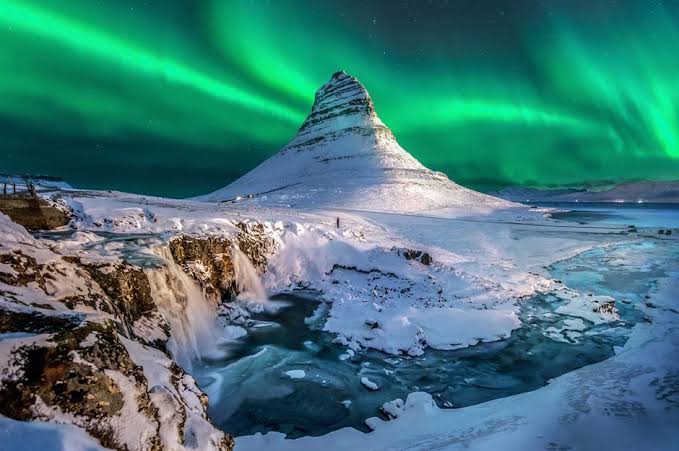Adventurers, mountaineers, and ecotourists have long been enchanted by the highest mountains on Earth. These spectacular peaks, which rise above the skies, provide views that few get to see for themselves, test human endurance, and symbolize resilience. These towering mountains, most commonly seen in the Karakoram and the Himalayas, are the product of intense geological processes that have been at work for millions of years, raising rock formations to incredible heights. The allure of these lofty peaks goes beyond just their height. Adventurers and explorers have left their mark on each of these mountains. Many have been the starting point of fabled ascents, during which mountaineers have fought off frigid temperatures, unexpected weather, and dizzying heights in an effort to reach the peak. While some of these peaks have become legendary symbols of mountaineering, others continue to provide tremendous challenges with very few successful ascents.
The world’s tallest mountains are important for more than just climbers; they also impact ecosystems and indigenous ways of life. They provide water for millions of people in the areas around them since they are the headwaters of important river systems. These mountains hold great religious and cultural significance for the indigenous peoples that live in their shadows, who have long held the views of these summits in high regard. Mount Everest is still the highest peak on Earth when we enter the year 2025, and the list of the world’s highest mountains stays the same. Our understanding of their exact altitudes has been refined, nevertheless, by ongoing research and breakthroughs in measurement technology. The iconic mountains are being meticulously documented thanks to the ever-improving data provided by satellite technology and GPS mapping.
These Are The Top 10 List Of The Highest Mountains In The World
1. Mount Everest

Height – 8,848m
Of course, the highest peak in the world is Mount Everest, which was first ascended by Sir Edmund Hillary and Tenzing Norgay in 1953. In recent times, Everest has been the subject of much investigation. Pictures of massive lines near the peak have sparked a heated discussion about Everest’s potential overcrowding. However, one thing is certain: Mount Everest’s natural allure will remain for the foreseeable future. The mountain has a magnetic pull on humanity, much like a flame. Not only do many people go to Everest Base Camp with the hopes of reaching the summit, but many also go to reach the base camp itself. It is now well recognized as one of the most famous multi-day hikes in the world.
2. K2
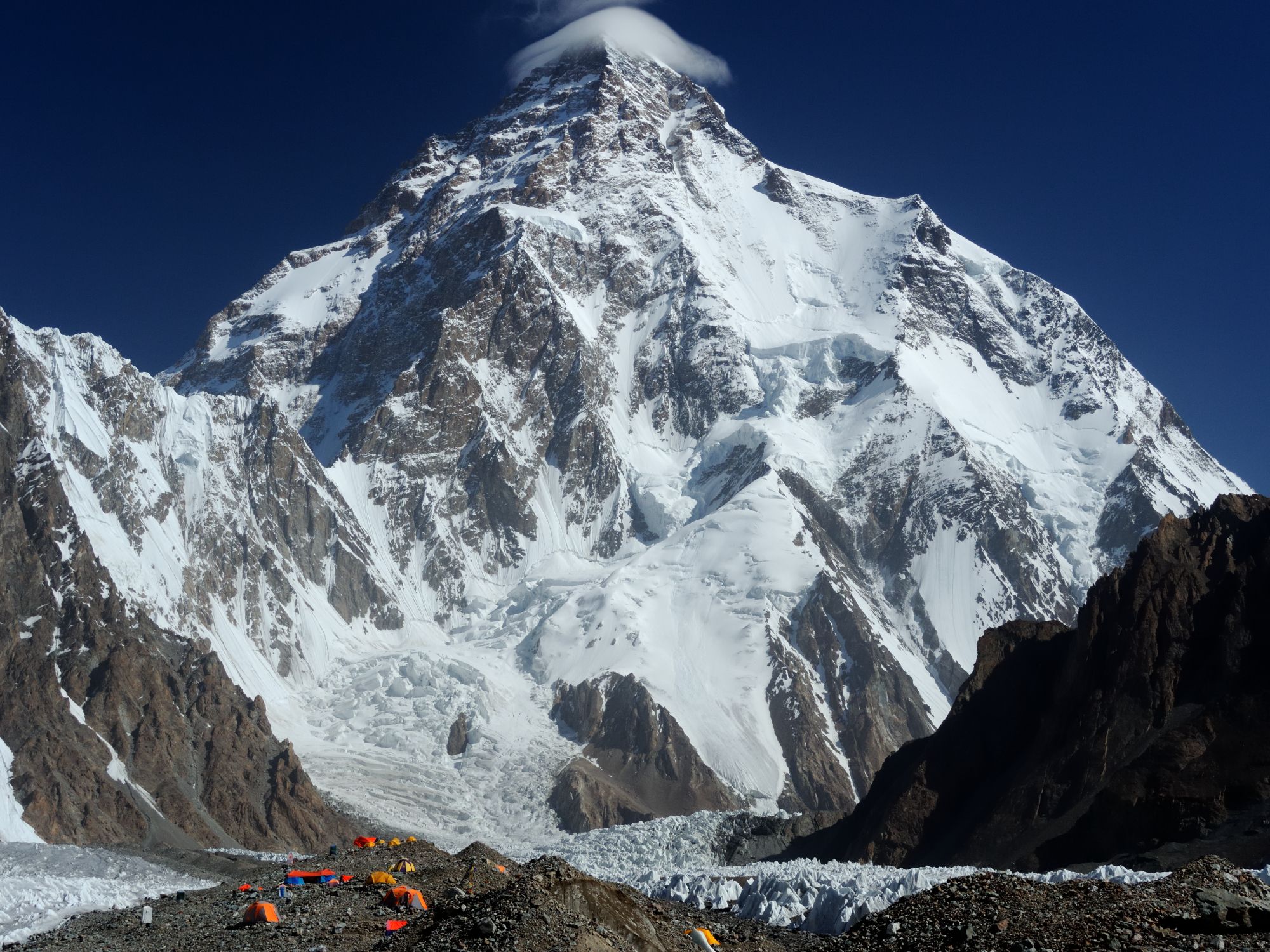
Height – 8,611m
At 8,611 meters (28,251 feet) above sea level, K2, also called Mount Godwin-Austen or Chhogori, is the world’s second-highest mountain. On the boundary between China and Pakistan lies this mountain range, which is part of the Karakoram. Mount Everest stands at 8,849 meters (29,032 feet) as the tallest mountain in the world. However, climbing K2 is deemed far more challenging and risky, leading to its moniker as “The Savage Mountain. Despite being the second-tallest mountain in the world, the mountain is widely regarded as one of the most difficult to climb. It is even harder than Mount Everest. With only over 300 successful summits and 77 fatalities, K2 actually has the second-highest fatality rate per summit attempt among all mountains over 8000m. Spoiler alert: Annapurna I in Nepal, the tenth-highest mountain in the world, has the greatest death rate. However, until last winter, no one had ever ascended K2 during the winter months not even Annapurna.
3. Kangchenjunga
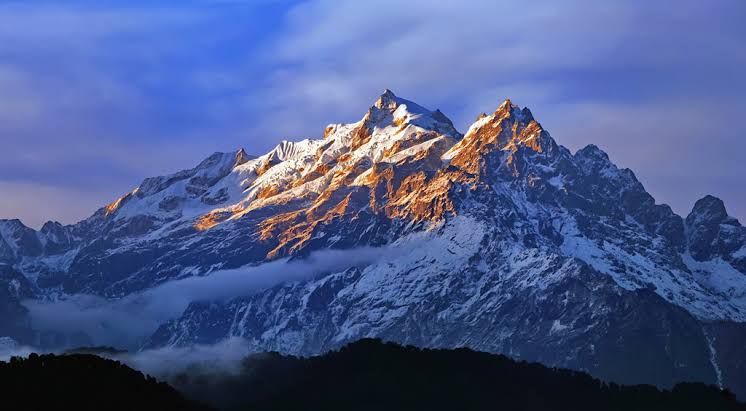
Height – 8,586m
It was your knowledge that Mount Everest was the highest mountain in the world, right? It was even known to you that K2 was the second highest. However, if you were to ask the majority of people what Kangchenjunga was, we are willing to wager that they would guess that it was some type of street food. No, it is not. It is the third tallest peak in the world, and its name is Kangchenjunga. Three of the peaks are located on the border between Nepal and Sikkim in India, and the other two are located in the Taplejung District of Nepal. It is possible to find it between the two countries.
4. Lotse
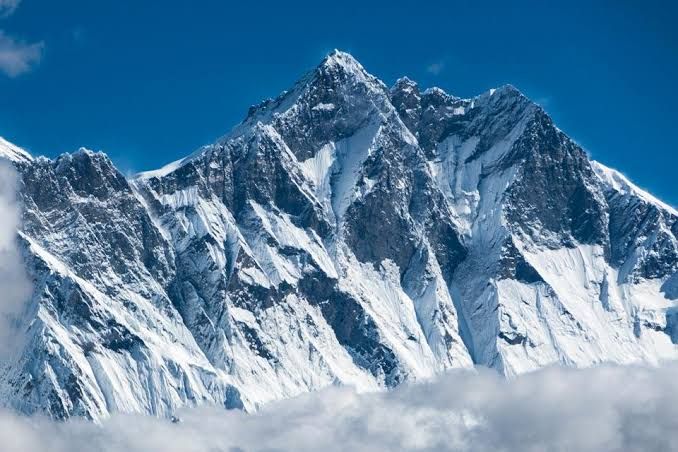
Height – 8,516m
At 8,516 meters (27,940 feet), Lhotse is the world’s fourth-highest mountain and is often compared to Mount Everest. It is linked to Everest through the South Col and is thus a component of the Everest massif. Climbers attempting Lhotse utilize the same path as Everest climbers due to the near vicinity of the two peaks until they reach Camp 3, which is situated at around 7,200 meters (23,600 ft) on the Lhotse Face. They then split off in different directions, each heading toward the top via the narrow and steep Reiss couloir. Lhotse Shar (8,383 meters) and Lhotse Middle (8,410 meters) are two of the several prominent subpeaks of Lhotse. Even though it is one of the world’s highest mountains, Lhotse isn’t as regularly climbed as Everest because of how much more famous Everest is. Still, you’ll need technical climbing skills for the ascent, especially in the couloir where the snow and steep slopes make the going tough. The first climb of Lhotse was successfully completed on May 18, 1956, by a Swiss team headed by Fritz Luchsinger and Ernst Reiss. It has been climbed many times since then, but it is still a very difficult mountain. Avalanches, severe weather, and high-altitude sickness were all part of the mountain’s terrible past. For climbers looking for a challenging but slightly less crowded Everest option, Lhotse has become more popular in recent years. Nevertheless, due to its technological complexity, it is an ambitious undertaking that necessitates prior knowledge and thorough planning.
5. Makalu
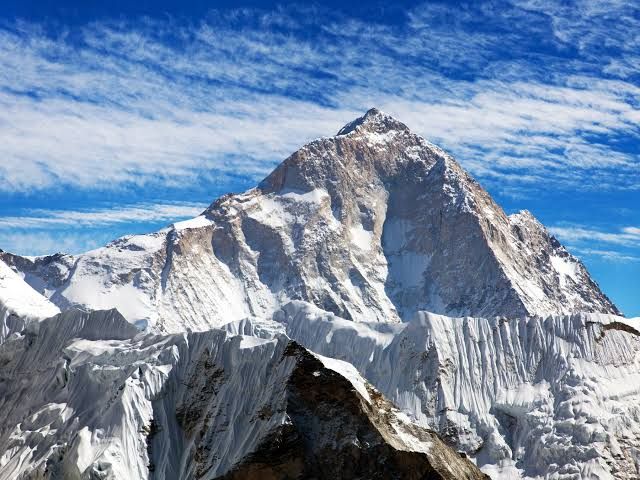
Height – 8,485m
There are four mountains in Nepal’s Everest Massif that are 8,000 meters or higher; Makalu is the third of these. Frenchmen under the command of Jean Franco were the first to reach the peak in 1955. The fact that all 10 members of the expedition crew reached the peak on this journey made their ascension all the more remarkable. This was a significant deal back then because usually only one or two climbers from each team made it to the peak on an expedition; now it just looks good, doesn’t it? Two of them reached the peak on May 15, 1955; four more ascended the following day; and four more the following day. Basically, it’s just a bunch of healthy mountain climbing.
6. Cho Oyu

Height – 8,188m
Cho Oyu completes the quartet of 8000-meter runners from the Everest region. Cho Oyu, at 8188 meters, is the sixth-highest mountain in the world and, because of its more gradual slopes, is often thought of as the easiest of the 8000-meter mountains to climb. Additionally, the Nangpa La pass, an important commercial route between the Khumbu and Tibetan Sherpas, is only a few kilometers away. Cho Oyu would be the chill, easygoing backup vocalist if the four mountains in the Everest region that are over 8000 meters were in a boyband. Probably the most approachable, if not the most showy.
7. Dhaulagiri
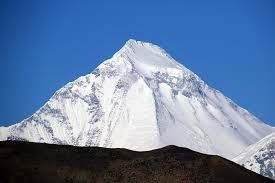
Height – 8,167m
At 8,167 meters, Nepal’s Dhaulagiri ranks as the world’s seventh-highest mountain and one of the most visually breathtaking peaks in the world. While the first ascent of Dhaulagiri occurred on May 13, 1960, the mountain is most famous for the views it provides on the well-traveled Annapurna Circuit. With Annapurna I only 34 km distant, Dhaulagiri is a common sight on the Annapurna trail. The Kaligandaki Gorge, the deepest gorge in the world, divides the mountains, thus this isn’t exactly a landscape-poor region.
8. Manaslu
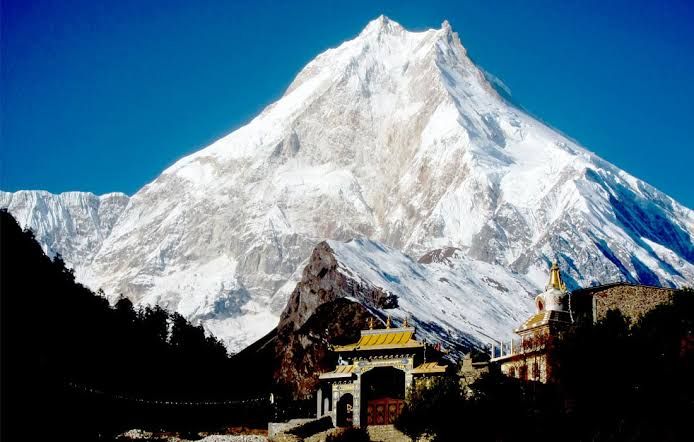
Height – 8,163m
A name derived from the Sanskrit word “manasa,” meaning “intellect” or “soul,” Manaslu is the eighth-highest mountain in the world. Toshio Imanishi and Gyalzen Norbu, members of a Japanese expedition, were the first to climb Manaslu. Their ascent to the peak occurred on May 9, 1956. Their climb sparked debate. Because the locals believed that earlier attempts had angered the Gods and caused avalanches that killed 18 people and destroyed a monastery in the vicinity, they blocked a Japanese team from reaching the peak in 1954. Even though the Japanese donated heavily to reconstruct the monastery, the locals still weren’t enthusiastic about the excursions, and another Japanese team didn’t reach the peak of Manaslu until 1971.
9. Nanga Parbat
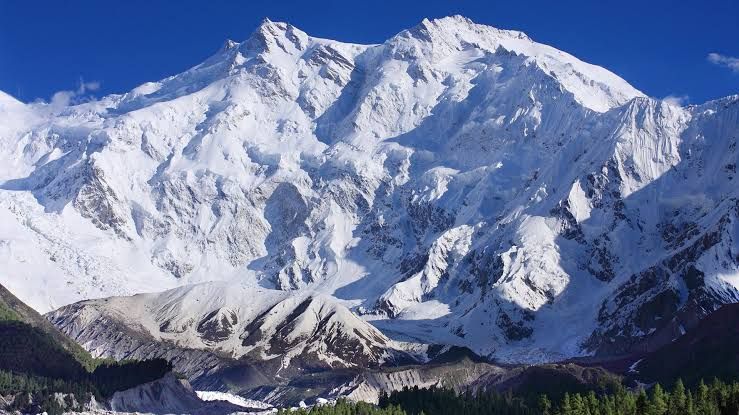
Height – 8,126m
Located in the western Himalayas of Pakistan, in the Gilgit Baltistan section of the Diamer District, Nanga Parbat is the ninth-highest mountain on Earth. The name derives from Sanskrit, where the words “nanga” and “parvata” signify “naked mountain,” as is the case with many other summits. Diamer, meaning “huge mountain” in Tibetan, is perhaps a more fitting (albeit unimaginative) name for the mountain. In every direction, Nanga Parbat looms large over the low-lying valleys that surround mountain. The mountain’s breathtaking Rupal Face is frequently hailed as the world’s highest mountain face, reaching an impressive 4,600 meters above sea level.
10. Annapurna I
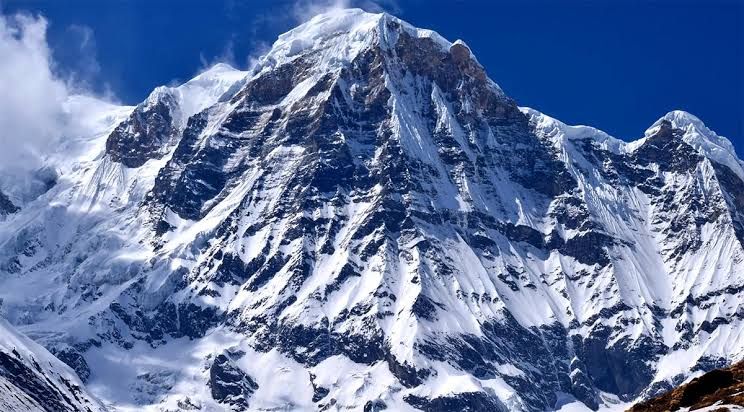
Height – 8,091m
One of the most well-known mountains on our list is Nepal’s Annapurna I, the tenth tallest peak in the world. our is due in large part to the fact that trekking in this region is genuinely famous all over the globe. Despite being only the tenth highest mountain in the world, Annapurna I has the greatest death rate of any mountain on this list. Tragically, 32% of ascent attempts end in fatalities.

